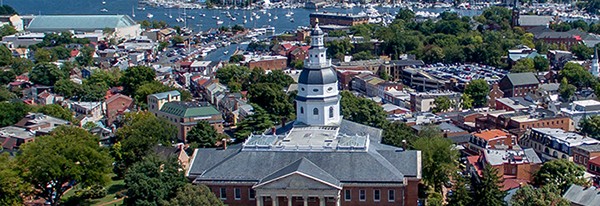Date:
Source: Capital Gazette, Capital Gazette Editorial Board
Hey buddy, can you spare a dime? How about $50 million?
That’s the projected price tag for an ambitious and attractive plan to save City Dock — the loose term describing the public areas along Dock Street, Compromise Street and Susan B. Campbell Park — from the ravages of sea-level rise on the Chesapeake Bay.
The plan released last month includes flood barriers, new green space, mixed-use areas for community events and a system of interconnected pathways to draw pedestrians and cyclists downtown. It is expected to unfold over the next five years with a projected completion date of March 2024.
It is an urgent project not only for needed changes it would bring to downtown Annapolis but for a financing mechanism that will focus resources on paying for solutions to the floodwaters rising all along the Chesapeake Bay.
Proponents of the City Dock action plan want to create a financial authority, similar to the Maryland Stadium Authority, to pay for redevelopment with bonds or other longterm financial structures.
Without this authority, this plan is doomed to become the 10th failed effort to yank City Dock out of its 1980s complacency and shove it toward a mid-21st-century future — and worse.
The planned measures to address flooding are complicated and expensive. Organizations behind this project — the City of Annapolis, Historic Annapolis, the National Park Service, the Urban Land Institute, the Chesapeake Conservancy and others — are about to begin a campaign to get the public on board.
How much of that effort is at building support for the financing authority is unclear. Organizers describe it as a local authority, but the model could work for similar projects that will be needed from Crisfield to Havre de Grace and beyond.
Mayor Gavin Buckley and others are seeking a meeting with Gov. Larry Hogan to win his support, a good move. We hope Hogan sees the potential to make this project a model for the rest of Maryland and create a legacy as a governor who took concrete action to deal with the climate emergency now upon us.
Organizers, however, seem to have only just begun talking with lawmakers who will be expected to get authorizing legislation through the General Assembly. In the post-Mike Busch era, where the death of the speaker left Anne Arundel with no seats among General Assembly leadership, that’s not so good.
The first of three phases in this plan begins with a project already on the books, fielding proposals to demolish and rebuild Noah Hillman Garage. It will take about seven months.
If the financial authority is created, downtown will begin to change in January 2021. Hillman Garage would be demolished and rebuilt; City Dock would begin construction and then take a little over three years to complete.
The plan is undeniably good. It is addresses both the urgent need to take action to improve resiliency to flooding on the city’s most valuable waterfront property and end the waste of public resources inherent in the continued use of this area as a parking lot. Without action of this sort, downtown Annapolis is in real peril of going under both literally and figuratively.
Make no mistake, however. The most crucial objective for Annapolis — and Maryland — is the creation of the financing authority.
Sea walls and pumping systems are engineering problems the world will be discussing for the rest of our lives. But they are just an illusion of hope unless we can pay for them.


